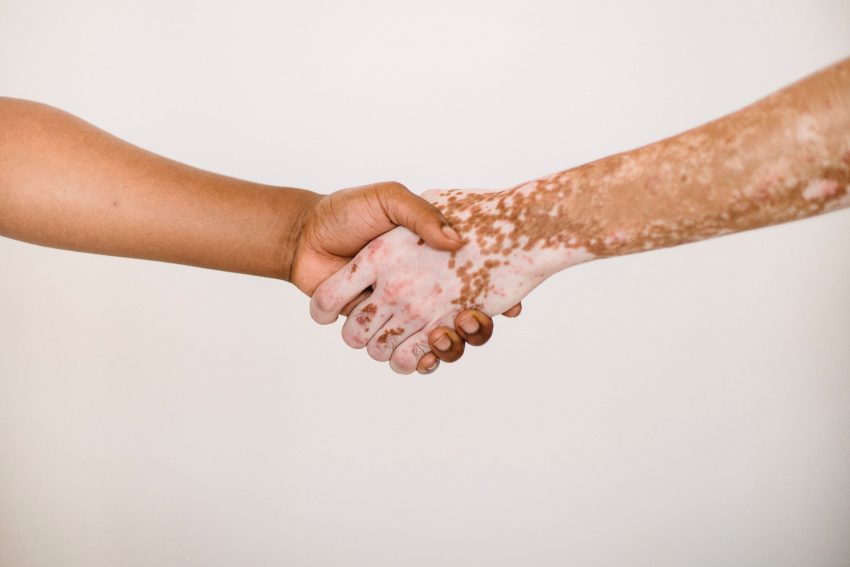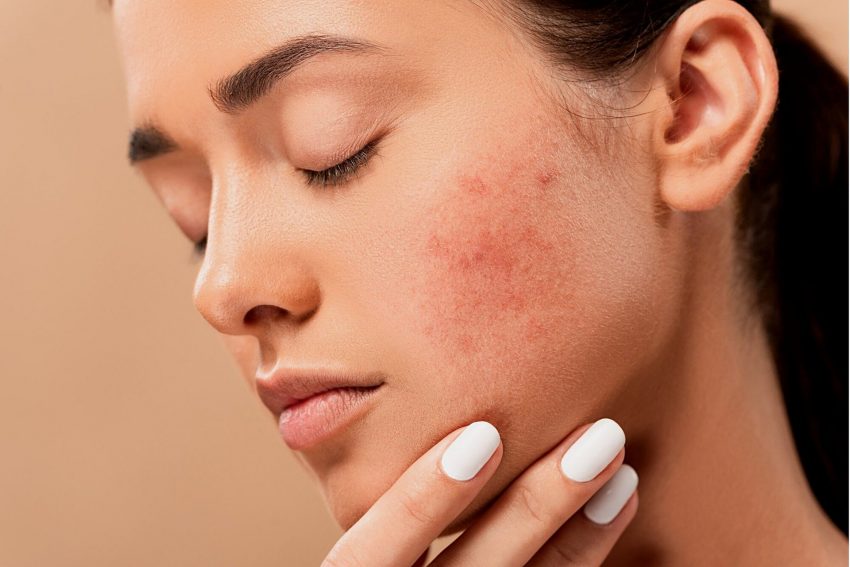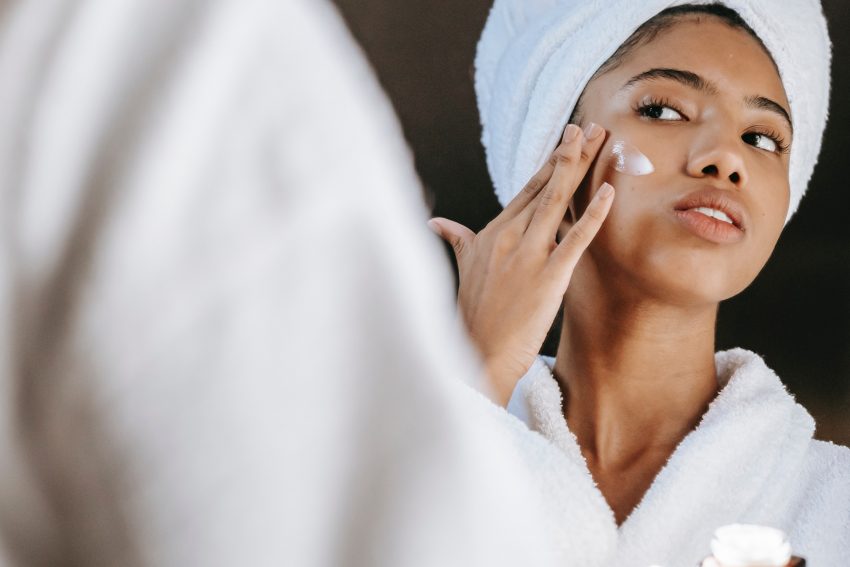Changes in our skin as we age are inevitable, including loss of moisture, changes in…

Everything You Need to Know About Pigmentation
With so many amazing skin treatments available, it’s hard to know which treatment is for which concern these days. Intimidating words like pigmentation are thrown around with no proper explanation.
Sometimes you might even be told you have a pigmentation issue and not fully receive the explanation you need. Which is why we want to break down everything you should know about pigmentation.
From what it is, to its causes, types and treatments, we’re here to clear things up once and for all.
Pigmentation: What is it?
Simply put, pigmentation refers to the colouring of our skin. Our skin gets its colours from a pigment called melanin, which is produced by special cells in the skin.
In some people, these cells can grow unhealthy or become damaged due to internal and external factors. This then alters our melanin production.
What’s the difference between pigmentation and hyperpigmentation?
We often see hyperpigmentation referred to simply as “pigmentation”, but this is actually incorrect and misleading. Pigmentation is just the colouring of our skin, but unwanted additional pigmentation is what we’re normally referring to in these cases.
Hyperpigmentation results from an increase in melanin. Though melanin is entirely normal and provides the colour in our skin, hair and eyes, there are several things that trigger changes in melanin production. This can include an increase or a decrease in the amount produced, most commonly because of factors like exposure to the sun, age, injuries to the skin and hormones.
Hyperpigmentation causes dark patches or spots. They can be beige, brown, red or purplish coloured and can appear anywhere.
What causes skin pigmentation?
Pigmentation can be a concern for people of any sex, gender, ethnicity or age, and is often naturally occurring.
We can suffer from pigmentation issues whatever age, sex, skin tone and ethnicity we are. When too much melanin is produced, we refer to it as hyperpigmentation. When we don’t produce enough, we call this hypopigmentation.
We know little for certain about the reason behind certain types of changes to our skin pigmentation, and yet there are other types with simple causes. For example, overexposure to the sun causes sunspots.
Common Forms of Pigmentation
There are many types of pigmentation, varying in severity – but all with available treatments.
Melasma
One of the more common types of pigmentation is called melasma and is caused by pregnancy. Visually, it appears as grey-brown patches of skin that usually develop on the face.
Acne Scarring Hyperpigmentation
Acne scarring is a common cause of hyperpigmentation and is often noticeably red and difficult to hide. This is because the scarring causes damage to the surface of the skin, leaving it damaged and uneven. Melanin can form around the areas damaged by the acne, but can be easily treated with laser treatments.
Often the pigmentation from acne scarring can be worse than the acne itself, and more long-lasting if left untreated.
Sun Damage (Solar Lentigines)
Often appearing much like freckles or age spots, sun damage is most commonly seen on the exposed areas of the face, such as the cheeks, forehead and nose. Sometimes it appears as uneven patches of skin tone. We most commonly see it in people over the age of 50. However, it can occur in younger people who’ve increased their sun exposure for long periods of time without skin protection.
Freckles
Though common, freckles are actually a form of hyperpigmentation. Medically referred to as ephelides, they occur when melanin production across the skin is uneven.
One common misconception is that freckles are caused from exposure to the sun. This is not strictly true: they’re actually genetic. However, they’re more likely to appear after sun exposure.
Vitiligo
One of the most noticeable and famous types of pigmentation is vitiligo, which is caused by the deaths or failures of our pigment-producing cells (melanocytes). People with vitiligo make up around 1% of the global population, though it’s far more noticeable on darker skin types.
Albinism
Albinism is one of the rarest types of pigmentation disorders and is inherited. Caused by the absence of melanin-producing enzymes, it leads to a lack of pigmentation in the skin, hair and eyes.
What can I do about my hyperpigmentation?
Like many skin conditions, the best treatment is prevention, and prevention means sun protection. Using a high SPF regularly can have a significant effect on your pigmentation.
However, sun damage isn’t the only cause. If your pigmentation concerns arise because of medication use or illness, then you will need to consult a dermatologist to determine the best viable treatment.
There are many forms of treatment for pigmentation issues. Some are more complex than others, but you can find them all effective in varying degrees depending on your concern. None of these treatments are miracle cures, but our expertise can guide you toward the best one for your particular concern and skin type.
Lightening Creams
Easily bought over-the-counter (OTC), lightening creams contain ingredients to help reduce pigmentation, and are of varying strengths. Some stronger creams and gels may only be available on prescription, but over time they’re highly capable of lightening skin.
Lightening creams are particularly effective for melasma and age spots, and for patches of discolouration. However, they usually take longer to work than professional treatments.
Face Acids
These work by causing your skin to shed its top layer, thereby exposing your new skin cells. Face acids are often available OTC, but be wary of those with an acid content of over 10% unless you trust the brand.
Face acids are effective for the treatment of mild hyperpigmentation, usually on light skin tones.
Retinoids
There’s a reason retinoids are some of the best ingredients in the industry, and they can work for almost all skin tones. Some are available OTC, and some are prescription only, depending on the strength of the solution.
They can treat hyperpigmentation, but are more often used to treat fine lines and wrinkles.
Microdermabrasion & Dermabrasion
Microdermabrasion uses a combination of tiny crystals, run over the skin, and a nourishing serum. We control this to smooth away old skin and reveal the clear, fresh skin cells below and encourage collagen production. However, it requires multiple treatments.
Dermabrasion is similar, but goes more deeply into the layers of skin. It’s more invasive and takes longer to recover from – but it’s more effective.
Both treatments are only to be carried out by professionals, as they can cause serious damage and even worsen pigmentation if done incorrectly.
Microdermabrasion is an effective treatment for acne scarring, and on lighter skin tones. Dermabrasion is more suited to serious pigmentation concerns and has a higher risk.
Chemical Peels
Once the go-to of the elite, chemical peels are now more readily available and can be an effective pigmentation treatment. They work to remove the upper layers of skin, which will take a few days to happen. They also require a considerable amount of aftercare to prevent the formation of further pigmentation.
Chemical peels are the ideal choice for those looking to reduce the appearance of sun damage, age spots, melasma and blotchiness. They are more suited to lighter skin tones, but can provide reasonably fast results.
Laser Removal
Laser treatments are by far the most effective way of reducing pigmentation in many forms. Non-invasive and relatively painless, advanced modern lasers are sophisticated enough to treat a range of skin types to destroy unwanted pigmentation without damaging the surrounding skin.
Once treated, the body removes the pigmentation naturally over time through the immune system, and works well on sun spots, hyperpigmentation, freckles, age spots, and birthmarks. It’s also suitable for all skin types.
IPL
Another form of laser removal, IPL is a fractional laser treatment that is gentler and requires less healing time. Short for Intense Pulsed Light, IPL works best on lighter skin tones and uses multiple wavelengths to target large areas of skin. It also stimulates the production of collagen in the skin.
IPL is ideal for those seeking the treatment of facial thread veins, flat spots, wrinkles and even enlarged pores.









